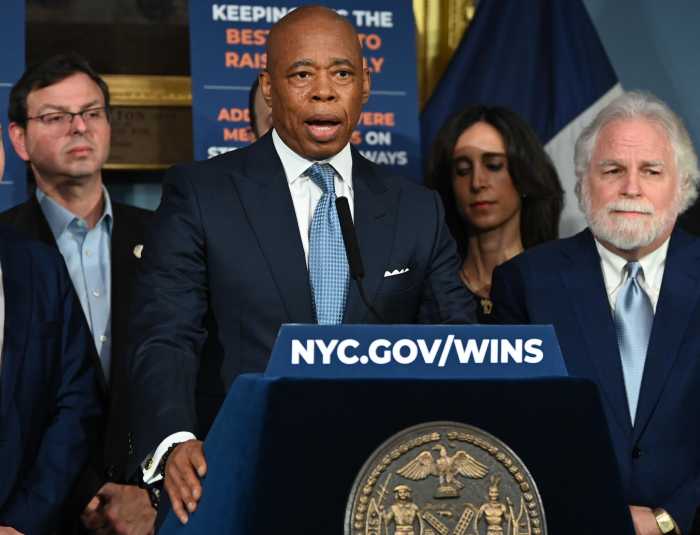In general, we support business improvement districts. But, at this point, we can’t support the effort to create a BID along Soho’s Broadway corridor.
In short, the steering committee of major property owners that has pushed for the creation of a Broadway Soho BID hasn’t won sufficient community support. Unlike the Chinatown and Hudson Square BIDs, which had strong support from Community Board 2, this BID was overwhelmingly rejected by C.B. 2. And it has generated fierce and widespread opposition in the Soho community.
There are also issues with the property owners’ vote that raise questions about whether it accurately represented community sentiment. For example, all 40 condo owners at the luxury building at 40 Mercer St. were counted as “yes” votes based on the signature of a single sponsor of the condo. These 40 votes were an important percentage of the total votes in support of the BID. The city’s Department of Small Business Services tells us that’s considered kosher — but it doesn’t pass our smell test. Many of these condo owners are reportedly absentee.
Meanwhile, longtime, full-time residents who have seen Soho “malled” over the years — turned from a world-renowned artists’ enclave into a shopping mall — have recoiled from the BID plan.
Assemblymember Deborah Glick recently withdrew her support for the BID. Citing the 40 Mercer St. residents who aren’t here full time, she called their contribution to the community “questionable,” especially when compared to the far higher number of permanent Soho residents who oppose the BID.
If there is a formal vote to authorize or deny the BID, however, it will be in the City Council. Margaret Chin, who represents Soho in the Council, wrote a talking point that appeared in this paper in February, in which she stated: “I have said from the beginning that I will not support a Broadway Soho BID unless I see substantial support from residents in the proposed BID catchment area, including from Community Board 2.”
Clearly, that “substantial support” just isn’t there.
Admittedly, the Broadway Soho BID Steering Committee, with Chin’s help, worked to scale back the BID’s scope and budget to try to meet the community’s wishes. A complicated reimbursement formula was scrapped in favor of a flat $1 annual fee for residential condo and co-op owners. Yet, in the end, most Soho residents remain unconvinced this BID is in the neighborhood’s best interests.
Nevertheless, what the BID is offering are basically benign things, like snow and trash removal and improvements in pedestrian safety. ACE, which had been providing supplemental sanitation services, was having trouble raising funds from local property owners and merchants to continue its operations, which resulted in the BID proposal.
If the BID isn’t approved, then the ball would be back in the court of the BID’s opponents. Without a BID, where will the money come from to fund ACE’s efforts to clean Broadway? The reality is that Broadway is hammered by droves of shoppers and tourists every day. It could use the help that ACE provided or a BID would provide.
But the proposed BID’s time has not yet come. The best solution is for the BID backers and community groups to take a step back and, together, go back to the drawing board and try to find a solution with broader support. The Hudson Square BID failed in its first iteration years ago, and came back with a model that now enjoys strong community support.
One thing is for certain, though — a BID without the community’s backing simply won’t fly.

































